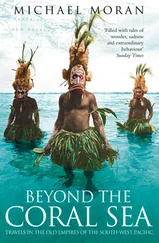The town of Cariaco has been repeatedly sacked in former times by the Caribs. Its population has augmented rapidly since the provincial authorities, in spite of prohibitory orders from the court of Madrid have often favoured the trade with foreign colonies. The population amounted, in 1800, to more than 6000 souls. The inhabitants are active in the cultivation of cotton, which is of a very fine quality. The capsules of the cotton-tree, when separated from the woolly substance, are carefully burnt; as those husks if thrown into the river, and exposed to putrefaction, yield noxious exhalations. The culture of the cacao-tree has of late considerably diminished. This valuable tree bears only after eight or ten years. Its fruit keeps very badly in the warehouses, and becomes mouldy at the expiration of a year, notwithstanding all the precautions employed for drying it.
It is only in the interior of the province, to the east of the Sierra de Meapire, that new plantations of the cacao-tree are seen. They become there the more productive, as the lands, newly cleared and surrounded by forests, are in contact with an atmosphere damp, stagnant, and loaded with mephitic exhalations. We there see fathers of families, attached to the old habits of the colonists, slowly amass a little fortune for themselves and their children. Thirty thousand cacao-trees will secure competence to a family for a generation and a half. If the culture of cotton and coffee have led to the diminution of cacao in the province of Caracas and in the small valley of Cariaco, it must be admitted that this last branch of colonial industry has in general increased in the interior of the provinces of New Barcelona and Cumana. The causes of the progressive movement of the cacao-tree from west to east may be easily conceived. The province of Caracas has been from a remote period cultivated: and, in the torrid zone, in proportion as a country has been cleared, it becomes drier and more exposed to the winds. These physical changes have been adverse to the propagation of cacao-trees, the plantations of which, diminishing in the province of Caracas, have accumulated eastward on a newly-cleared and virgin soil. The cacao of Cumana is infinitely superior to that of Guayaquil. The best is produced in the valley of San Bonifacio; as the best cacao of New Barcelona, Caracas, and Guatimala, is that of Capiriqual, Uritucu, and Soconusco. Since the island of Trinidad has become an English colony, the whole of the eastern extremity of the province of Cumana, especially the coast of Paria, and the gulf of the same name, have changed their appearance. Foreigners have settled there, and have introduced the cultivation of the coffee-tree, the cotton-tree, and the sugar-cane of Otaheite. The population has greatly increased at Carupano, in the beautiful valley of Rio Caribe, at Guira, and at the new town of Punta di Piedra, built opposite Spanish Harbour, in the island of Trinidad. The soil is so fertile in the Golfo Triste, that maize yields two harvests in the year, and produces three hundred and eighty fold the quantity sown.
Early in the morning we embarked in a sort of narrow canoe, called a lancha, in hopes of crossing the gulf of Cariaco during the day. The motion of the waters resembles that of our great lakes, when they are agitated by the winds. From the embarcadero to Cumana the distance is only twelve nautical leagues. On quitting the little town of Cariaco, we proceeded westward along the river of Carenicuar, which, in a straight line like an artificial canal, runs through gardens and plantations of cotton-trees. On the banks of the river of Cariaco we saw the Indian women washing their linen with the fruit of the parapara (Sapindus saponaria, or soap-berry), an operation said to be very injurious to the linen. The bark of the fruit produces a strong lather; and the fruit is so elastic that if thrown on a stone it rebounds three or four times to the height of seven or eight feet. Being a spherical form, it is employed in making rosaries.
After we embarked we had to contend against contrary winds. The rain fell in torrents, and the thunder rolled very near. Swarms of flamingoes, egrets, and cormorants filled the air, seeking the shore, whilst the alcatras, a large species of pelican, alone continued peaceably to fish in the middle of the gulf. The gulf of Cariaco is almost everywhere forty-five or fifty fathoms deep; but at its eastern extremity, near Curaguaca, along an extent of five leagues, the lead does not indicate more than three or four fathoms. Here is found the Baxo de la Cotua, a sand-bank, which at low-water appears like a small island. The canoes which carry provisions to Cumana sometimes ground on this bank; but always without danger, because the sea is never rough or heavy. We crossed that part of the gulf where hot springs gush from the bottom of the sea. It was flood-tide, so that the change of temperature was not very perceptible: besides, our canoe drove too much towards the southern shore. It may be supposed that strata of water must be found of different temperatures, according to the greater or less depth, and according as the mingling of the hot waters with those of the gulf is accelerated by the winds and currents. The existence of these hot springs, which we were assured raise the temperature of the sea through an extent of ten or twelve thousand square toises, is a very remarkable phenomenon. (* In the island of Guadaloupe, there is a fountain of boiling water, which rushes out on the beach. Hot-water springs rise from the bottom of the sea in the gulf of Naples, and near the island of Palma, in the archipelago of the Canary Islands.) Proceeding from the promontory of Paria westward, by Irapa, Aguas Calientes, the gulf of Cariaco, the Brigantine, and the valley of Aragua, as far as the snowy mountains of Merida, a continued band of thermal waters is found in an extent of 150 leagues.
Adverse winds and rainy weather forced us to go on shore at Pericantral, a small farm on the south side of the gulf. The whole of this coast, though covered with beautiful vegetation, is almost wholly uncultivated. There are scarcely seven hundred inhabitants: and, excepting in the village of Mariguitar, we saw only plantations of cocoa-trees, which are the olives of the country. This palm occupies on both continents a zone, of which the mean temperature of the year is not below 20 degrees.* (* The cocoa-tree grows in the northern hemisphere from the equator to latitude 28 degrees. Near the equator we find it from the plains to the height of 700 toises above the level of the sea.) It is, like the chamaerops of the basin of the Mediterranean, a true palm-tree of the coast. It prefers salt to fresh water; and flourishes less inland, where the air is not loaded with saline particles, than on the shore. When cocoa-trees are planted in Terra Firma, or in the Missions of the Orinoco, at a distance from the sea, a considerable quantity of salt, sometimes as much as half a bushel, is thrown into the hole which receives the nut. Among the plants cultivated by man, the sugar-cane, the plantain, the mammee-apple, and alligator-pear (Laurus persea), alone have the property of the cocoa-tree; that of being watered equally well with fresh and salt water. This circumstance is favourable to their migrations; and if the sugarcane of the sea-shore yield a syrup that is a little brackish, it is believed at the same time to be better fitted for the distillation of spirit than the juice produced from the canes in inland situations.
The cocoa-tree, in the other parts of America, is in general cultivated around farm-houses, and the fruit is eaten; in the gulf of Cariaco, it forms extensive plantations. In a fertile and moist ground, the tree begins to bear fruit abundantly in the fourth year; but in dry soils it bears only at the expiration of ten years. The duration of the tree does not in general exceed eighty or a hundred years; and its mean height at that age is from seventy to eighty feet. This rapid growth is so much the more remarkable, as other palm-trees, for instance, the moriche,* (* Mauritia flexuosa.) and the palm of Sombrero,* (* Corypha tectorum.) the longevity of which is very great, frequently do not attain a greater height than fourteen or eighteen feet in the space of sixty years. In the first thirty or forty years, a cocoa-tree of the gulf of Cariaco bears every lunation a cluster of ten or fourteen nuts, all of which, however, do not ripen. It may be reckoned that, on an average, a tree produces annually a hundred nuts, which yield eight flascos* of oil. (One flasco contains 70 or 80 cubic inches, Paris measure.) In Provence, an olive-tree thirty years old yields twenty pounds, or seven flascos of oil, so that it produces something less than a cocoa-tree. There are in the gulf of Cariaco plantations (haciendas) of eight or nine thousand cocoa-trees. They resemble, in their picturesque appearance, those fine plantations of date-trees near Elche, in Murcia, where, over the superficies of one square league, there may be found upwards of 70,000 palms. The cocoa-tree bears fruit in abundance till it is thirty or forty years old; after that age the produce diminishes, and a trunk a hundred years old, without being altogether barren, yields very little. In the town of Cumana there is prepared a great quantity of cocoa-nut oil, which is limpid, without smell, and very fit for burning. The trade in this oil is not less active than that on the coast of Africa for palm-oil, which is obtained from the Elais guineensis, and is used as food. I have often seen canoes arrive at Cumana laden with 3000 cocoa-nuts.
Читать дальше












